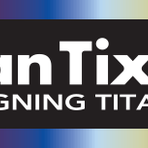Steel Giants Clash: The Nippon Steel and U.S. Steel Saga
June 18, 2025, 10:11 am

Location: United States, Pennsylvania, Pittsburgh
Employees: 10001+
Founded date: 1901
Total raised: $240M
The steel industry is a battleground. Nippon Steel and U.S. Steel are locked in a high-stakes game. The stakes? Billions of dollars and the future of American manufacturing. The recent developments have sent shockwaves through the market, affecting shares and investor confidence.
Nippon Steel's bid for U.S. Steel is not just a business transaction. It’s a chess match. Each move is calculated. Each statement is scrutinized. Recently, a Nippon Steel executive hinted at the need for "management freedom" to finalize the acquisition. This comment sent U.S. Steel shares tumbling by 2.8%. Investors reacted like a cat startled by a loud noise. The market doesn’t like uncertainty.
The clock is ticking. June 18 marks the expiration of the current acquisition contract. Nippon Steel and U.S. Steel may extend this deadline. But time is a double-edged sword. Delays can breed doubt. Doubt can erode trust. The question looms: Will they reach an agreement before the deadline?
On the other hand, the approval from President Trump for Nippon Steel's $14.9 billion bid has injected a dose of optimism. This approval is a crucial milestone. It clears a significant hurdle in a process that has been anything but smooth. The journey has been fraught with challenges, including union resistance and national security reviews. Each obstacle was a mountain to climb. Yet, Nippon Steel has persevered.
The approval has buoyed Nippon Steel shares. Investors are now looking at the U.S. market with renewed interest. The potential for growth in high-end products is enticing. Nippon Steel sees opportunity where others see risk. They anticipate that production cuts and job reductions are unlikely. This optimism is a beacon in a stormy sea.
However, the landscape is complex. The U.S. steel industry is not just about numbers. It’s about people. It’s about communities. Steel mills are the lifeblood of many towns. The fear of job losses looms large. Unions are wary. They are the guardians of workers' rights. Their resistance is a reminder that business decisions have real-world consequences.
Nippon Steel's management has downplayed the risks associated with the acquisition. They project confidence. They envision a future where both companies thrive. But can they deliver? The golden share concept introduces a layer of complexity. It gives the U.S. government a say in management decisions. This could be a blessing or a curse. It could protect American interests or stifle growth.
The dynamics of this acquisition are reminiscent of a high-stakes poker game. Each player has their cards close to their chest. Transparency is scarce. The stakes are high, and the pressure is palpable. Investors are watching closely. They want to know if this deal will solidify Nippon Steel's position in the U.S. market or if it will fizzle out like a damp firecracker.
The broader implications of this acquisition extend beyond the companies involved. It reflects the ongoing tension between foreign investment and national security. The U.S. government is cautious. They want to protect American jobs while fostering economic growth. This balancing act is delicate. One misstep could lead to a backlash.
As the deadline approaches, the pressure mounts. Both companies must navigate a labyrinth of regulations and public sentiment. The clock is ticking, and the stakes are rising. Will they find common ground? Or will this deal collapse under its own weight?
In the world of steel, strength is paramount. But strength is not just about production capacity. It’s about resilience. It’s about adaptability. Nippon Steel and U.S. Steel must demonstrate both. They must show that they can work together for mutual benefit. The future of the steel industry hangs in the balance.
In conclusion, the Nippon Steel and U.S. Steel saga is a microcosm of larger economic forces at play. It highlights the complexities of globalization, investment, and labor relations. As the story unfolds, one thing is clear: the steel industry is at a crossroads. The decisions made in the coming weeks will shape its future. Investors, workers, and communities are all watching. The outcome remains uncertain, but the stakes have never been higher.
Nippon Steel's bid for U.S. Steel is not just a business transaction. It’s a chess match. Each move is calculated. Each statement is scrutinized. Recently, a Nippon Steel executive hinted at the need for "management freedom" to finalize the acquisition. This comment sent U.S. Steel shares tumbling by 2.8%. Investors reacted like a cat startled by a loud noise. The market doesn’t like uncertainty.
The clock is ticking. June 18 marks the expiration of the current acquisition contract. Nippon Steel and U.S. Steel may extend this deadline. But time is a double-edged sword. Delays can breed doubt. Doubt can erode trust. The question looms: Will they reach an agreement before the deadline?
On the other hand, the approval from President Trump for Nippon Steel's $14.9 billion bid has injected a dose of optimism. This approval is a crucial milestone. It clears a significant hurdle in a process that has been anything but smooth. The journey has been fraught with challenges, including union resistance and national security reviews. Each obstacle was a mountain to climb. Yet, Nippon Steel has persevered.
The approval has buoyed Nippon Steel shares. Investors are now looking at the U.S. market with renewed interest. The potential for growth in high-end products is enticing. Nippon Steel sees opportunity where others see risk. They anticipate that production cuts and job reductions are unlikely. This optimism is a beacon in a stormy sea.
However, the landscape is complex. The U.S. steel industry is not just about numbers. It’s about people. It’s about communities. Steel mills are the lifeblood of many towns. The fear of job losses looms large. Unions are wary. They are the guardians of workers' rights. Their resistance is a reminder that business decisions have real-world consequences.
Nippon Steel's management has downplayed the risks associated with the acquisition. They project confidence. They envision a future where both companies thrive. But can they deliver? The golden share concept introduces a layer of complexity. It gives the U.S. government a say in management decisions. This could be a blessing or a curse. It could protect American interests or stifle growth.
The dynamics of this acquisition are reminiscent of a high-stakes poker game. Each player has their cards close to their chest. Transparency is scarce. The stakes are high, and the pressure is palpable. Investors are watching closely. They want to know if this deal will solidify Nippon Steel's position in the U.S. market or if it will fizzle out like a damp firecracker.
The broader implications of this acquisition extend beyond the companies involved. It reflects the ongoing tension between foreign investment and national security. The U.S. government is cautious. They want to protect American jobs while fostering economic growth. This balancing act is delicate. One misstep could lead to a backlash.
As the deadline approaches, the pressure mounts. Both companies must navigate a labyrinth of regulations and public sentiment. The clock is ticking, and the stakes are rising. Will they find common ground? Or will this deal collapse under its own weight?
In the world of steel, strength is paramount. But strength is not just about production capacity. It’s about resilience. It’s about adaptability. Nippon Steel and U.S. Steel must demonstrate both. They must show that they can work together for mutual benefit. The future of the steel industry hangs in the balance.
In conclusion, the Nippon Steel and U.S. Steel saga is a microcosm of larger economic forces at play. It highlights the complexities of globalization, investment, and labor relations. As the story unfolds, one thing is clear: the steel industry is at a crossroads. The decisions made in the coming weeks will shape its future. Investors, workers, and communities are all watching. The outcome remains uncertain, but the stakes have never been higher.
